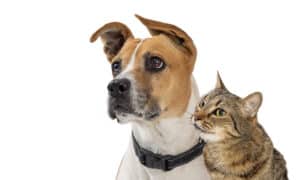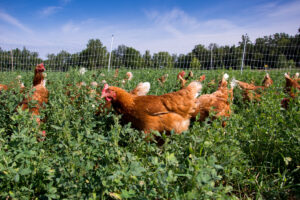The moon is the closest celestial body to our own planet and has captivated the attention of humans for hundreds of years. As they lie awake and gaze out their windows at night, many children find the moon particularly captivating and wonder what it might be like to visit. If your child is fascinated by the moon, you should get them one of the many amazing children’s books about it! Supporting your child’s aspirations and interests helps build their confidence.
From whimsical picture books to informative nonfiction texts, there are numerous books available that offer unique perspectives on the moon for young readers. Whether children are curious about how the moon was formed, the phases of the moon, how it affects life on earth, or the meaning behind lunar festivals, there is a book out there for them.
In this post, we will introduce some of our favorite children’s books about the moon and why they are worth reading. The books on this list have been vetted by readers around the world. We’ll share with you what they enjoyed and what makes each book unique. So, keep reading to find the best moon books for kids!
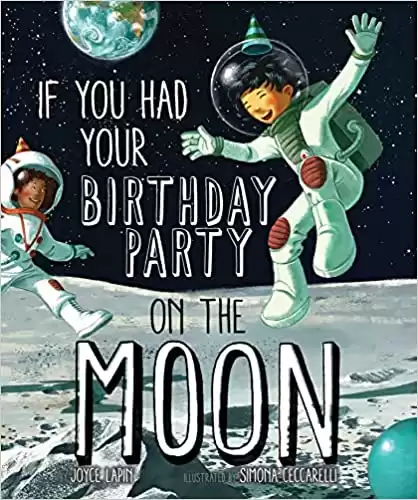 Check Amazon
Check Amazon- 40 pages.
- Recommended for children ages 7 and older.
- 2nd- and 3rd-grade reading level.
- Entertaining and informative.
 Check Amazon
Check Amazon- 80 pages.
- Recommended for children ages 5 through 7.
- An educational book teaching about space and space terms.
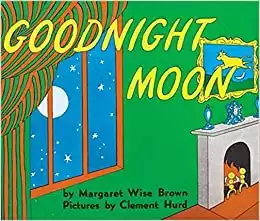 Check Amazon
Check Amazon- 32 pages.
- Customers recommend this book for babies and children up to 3 years old.
- A classic children's book.
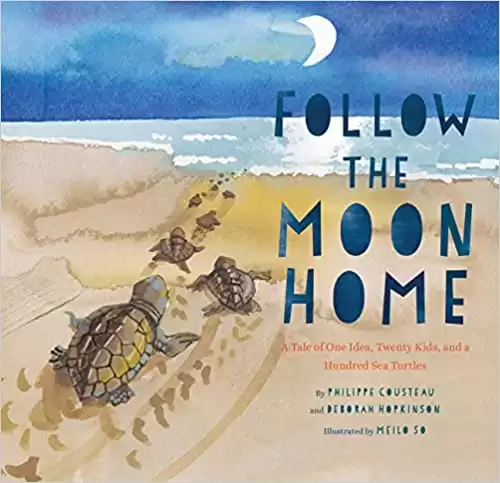 Check Amazon
Check Amazon- 48 pages.
- Recommended for children ages 6 through 10.
- A story about the environment, community, and friendship.
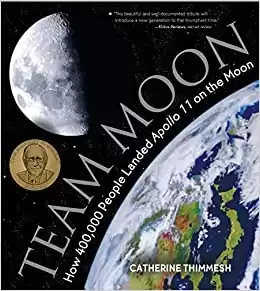 Check Amazon
Check Amazon- 80 pages.
- Recommended for children ages 10 through 12.
- Winner of the Robert F. Sibert Informational Book Award.
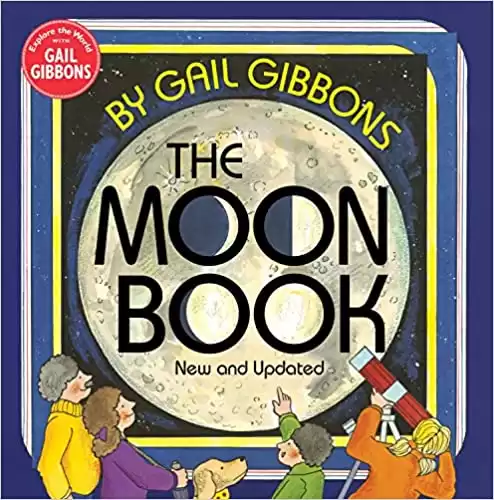 Check Amazon
Check Amazon- 32 pages.
- Recommended for children ages 4 through 8.
- A simple introductory book about the moon, its effect on the ocean's tides, and more.
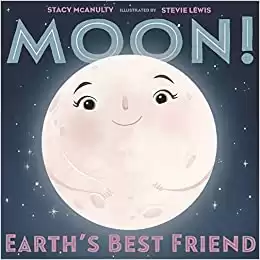 Check Amazon
Check Amazon- 40 pages.
- Customers recommend this book for children ages 2 through 6.
- The third book in the six-book series, Our Universe.
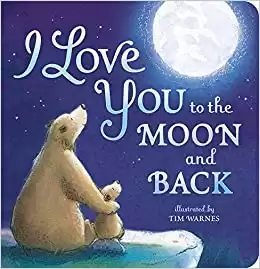 Check Amazon
Check Amazon- 28 pages.
- Customers recommend this book for babies and children up to 3 years old.
- A modern favorite.
 Check Amazon
Check Amazon- A 400-page novel.
- Customers recommend this book for readers ages 8 through 12.
- Winner of the 2017 Newbery Medal.
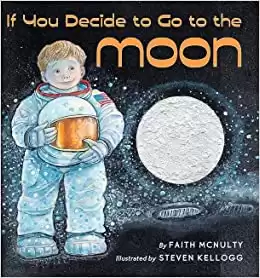 Check Amazon
Check Amazon- 48 pages.
- Customers recommend this book for children ages 3 through 6.
- Preschool through kindergarten reading level.
Top Picks: The Best Children’s Books About the Moon
#1 Best Overal: If You Had Your Birthday Party on the Moon by Joyce Lapin (Author) and Simona Ceccarelli (Illustrator)
If your child’s big day is coming up or they just love the moon, then If You Had Your Birthday Party on the Moon will set let their imagination run wild. The story is precisely what the title suggests: having a birthday party on the moon! However, even though it is a cute and exciting story, there are also fantastic moon facts that will make this a fun and educational surprise for kids.
Throughout the story, readers learn many fun things about the moon and outer space. The book is filled with colorful illustrations showing young astronauts of different colors and features having a blast in zero gravity as they explore the moon. If you took a trip to outer space, for example, you could look for golf balls and space boots, or even eat a chocolate-pudding cake from a foil pouch. In addition, there are lots of extra resources at the end of the book for anyone who wants to learn more about space!
Several customers got excellent responses from their children and said that the book was both fun and educational. Readers also enjoyed the fantastic illustrations and the unique storyline. They also loved that it is not a super short book and kept kids reading for more than five minutes at a time! However, its length also means that it’s probably not the best book to read at a birthday party.
Pros and Cons of If You Had Your Birthday Party on the Moon by Joyce Lapin (Author) and Simona Ceccarelli (Illustrator)
| Pros | Cons |
|---|---|
| This is a cute and fantastical story, but it is also filled with educational facts. | Since it is a longer picture book, this may not be the best choice to read aloud at a birthday party. |
| There are extra resources at the end of the book. | |
| Readers like that the book is both fun and educational. | |
| The book is filled with colorful illustrations. | |
| The illustrations include children of multiple races. | |
| It is a longer picture book so your child can enjoy it for more than just five minutes at a time. |
- 40 pages.
- Recommended for children ages 7 and older.
- 2nd- and 3rd-grade reading level.
- Entertaining and informative.
2. 50 Things to See on the Moon: A First-Time Stargazer’s Guide by John A. Read
Written by astronomer John A. Read, Things to See on the Moon includes some of the best things you can see to see in the night sky. When Read was young, he got himself a drugstore telescope so that he could see what was in the sky. When he realized that even with a cheap telescope he could see so many amazing things like Saturn and the moon, he decided he wanted to share them with others.
Read’s writing is direct and to the point without any unnecessary details. This friendly guide provides a lot of information without becoming too overwhelming. Read also shows that no matter what instrument you’re using, there is something to see up in space! The information is shared in a way that children can understand and show off next time the moon is out!
This book tells you everything you need to know about observing the moon, from what tools to use and when to look at it, to a daily guide of what to spot on each lunar day. It is packed with pictures, interesting facts, and other historical tidbits.
This is the ideal book for a novice astronomer who has an interest in what is out there. If your kid always talks about the moon, they will quickly get lost in this well-put-together book.
Pros and Cons of 50 Things to See on the Moon: A First-Time Stargazer’s Guide by John A. Read
| Pros | Cons |
|---|---|
| This book includes 50 of the best things to see in the night sky. | |
| The information is direct and straight to the point without any unnecessary details. | |
| This is a friendly guide that provides lots of information without being too overwhelming. | |
| The author provides instructions for any level of equipment. | |
| This book tells you everything you need to know about observing the moon, what tools to use, when to look at it, and a daily guide of what to spot on each lunar day. | |
| It is packed with pictures, interesting facts, and other historical tidbits. |
- 80 pages.
- Recommended for children ages 5 through 7.
- An educational book teaching about space and space terms.
3. Goodnight Moon by Margaret Wise Brown (Author) and Clement Hurd (Illustrator)
Goodnight Moon is a children’s book that has been a beloved classic for several generations. It was first published in 1947, but even today it remains an essential bedtime story that soothes young children to sleep at night. This book is a great choice for babies through three-year-olds, although many older children love it as well.
In this simple story, a young rabbit says goodnight to everything in his room, from the picture on the wall to the moon outside his window. The poetic text is simple but captivating, making it easy to read aloud for both children and adults. Clement Hurd’s simple and colorful illustrations are playful and enchanting, and bring the book’s sleepy world to life.
Why has this book remained a favorite after so many years? Goodnight Moon captures the spirit of bedtime with a magical and comforting atmosphere, helping children feel safe and cozy as they drift off to sleep. And isn’t that every parent’s dream? If you need a great bedtime story, this tried-and-true book will be an excellent choice. There is a reason it’s been a favorite for over 75 years!
However, some customers did not like the simplicity of this book. In addition, unless older children remember the story from when they were young, they may find it too slow.
Pros and Cons of Goodnight Moon by Margaret Wise Brown (Author) and Clement Hurd (Illustrator)
| Pros | Cons |
|---|---|
| This book has been a beloved classic for over 75 years. | Older children may find the story too slow. |
| It is a great choice for babies through children who are three years old. However, many older children still enjoy it as well. | Some customers did not enjoy the simplicity of the book. |
| The story is told in a poetic style that is easy to read aloud. | |
| The illustrations are simple and colorful. | |
| This book captures the spirit of bedtime with a magical and comforting atmosphere. |
- 32 pages.
- Customers recommend this book for babies and children up to 3 years old.
- A classic children's book.
4. Follow the Moon Home: A Tale of One Idea, Twenty Kids, and a Hundred Sea Turtles by Philippe Cousteau (Author), Deborah Hopkinson (Author), and Meilo So (Illustrator)
Follow the Moon Home is a powerful story of a little girl who rallies her neighborhood to save the sea turtles near her home. As simple as this story may sound, it is packed with helpful examples and information as readers discover the magic of nature and the importance of conservation. The book helps readers to understand the effect of humans on the environment, as the sea turtles in the story have trouble finding their way due to the bright lights of the buildings interfering with the light of the moon. The authors are both incredible in their own right. Philippe Cousteau was an important environmental activist and the son of the famous oceanographer and filmmaker Jacques Cousteau. Deborah Hopkinson is an award-winning author of several fiction and nonfiction books.
This book is not only a charming story, but it also carries an important message about the preservation of the natural world. Its vivid language and stunning illustrations capture the wonder and beauty of nature, inspiring readers to take action, and that even young children can make a difference. It encourages young readers to be proactive in their communities and reminds everyone of the importance of taking care of our planet.
Both teachers and parents have high praise for this book. They claim it was an excellent book to read to interest kids in social and environmental activism. It is also a wonderful book for group reading and discussions. Cousteau even included a collection of ideas and resources at the end of the book to help children get started.
Pros and Cons of Follow the Moon Home: A Tale of One Idea, Twenty Kids, and a Hundred Sea Turtles by Philippe Cousteau (Author), Deborah Hopkinson (Author), and Meilo So (Illustrator)
| Pros | Cons |
|---|---|
| This book explains the importance of the moon and how it helps sea turtles find their way home. | |
| It is packed with helpful examples and information that help discover the magic of nature and the importance of conservation. | |
| The authors are both award-winning figures. | |
| One of the authors, Philippe Cousteau, was an important environmental activist and the son of the famous oceanographer and filmmaker Jacques Cousteau. | |
| The story is written with vivid language. | |
| It has stunning and captivating illustrations. | |
| This book encourages young readers to be proactive in their communities and reminds everyone of the importance of taking care of our planet. | |
| Both teachers and parents have high praise for this book. It is also a wonderful book for group reading and discussions. | |
| This is an excellent book to help children become more interested in social and environmental activism. | |
| It is also a wonderful book for group reading and discussions. | |
| Cousteau included a collection of ideas and resources at the end of the book to help children get started. |
- 48 pages.
- Recommended for children ages 6 through 10.
- A story about the environment, community, and friendship.
5. Team Moon: How 400,000 People Landed Apollo 11 on the Moon by Catherine Thimmesh
Team Moon: How 400,000 People Landed Apollo 11 on the Moon is an excellent book about what teamwork can accomplish and is filled with amazing facts about the first moon landing. You might be familiar with Neil Armstrong and his first steps on the moon, but what about the 400,000 other people who actually made those first steps possible? This book provides unique insights into the multitudes of people behind the scenes who tirelessly worked to make Apollo 11 a reality.
This book is extremely well-researched by Catherine Thimmesh, and she includes facts from national archives and NASA transcripts, along with stunning photographs that help to showcase this incredible event. However, what makes this book unique compared to others about the Apollo 11 mission, is that Thimmesh retells the story with an emphasis on the thousands of overlooked contributions made by those who were not in the spotlight — people like camera designers, flight directors, engineers, suit testers, seamstresses, and the telescope crew.
Apollo 11 was indeed a giant leap for mankind, and this book will inspire and show readers just how incredible the first moon landing really was! This book is 80 pages long and written for a reading age of 10 to 12 years old.
Pros and Cons of How 400,000 People Landed Apollo 11 on the Moon by Catherine Thimmesh
| Pros | Cons |
|---|---|
| This book gives a unique perspective as it focuses on the 400,000 crew members behind the scenes of Apollo 11, like camera designers, flight directors, engineers, suit testers, seamstresses, and the telescope crew. | |
| It is extremely well-researched and includes facts and quotes from the national archives and NASA transcripts. | |
| The book is filled with insightful photographs from the Apollo 11 mission. | |
| This book is 80 pages long and written for a reading age of 10 to 12 years old. | |
| Readers will learn many incredible facts about the first moon landing, as well as the many people who made it possible. |
- 80 pages.
- Recommended for children ages 10 through 12.
- Winner of the Robert F. Sibert Informational Book Award.
6. The Moon Book by Gail Gibbons
The Moon Book is an easy-to-read story for young children that includes all kinds of amazing facts about the moon and how it affects our planet. This newer version is recently revised and includes new discoveries and an updated map of the surface of the moon. In addition, it was thoroughly reviewed by an astrophysics expert!
The Moon Book covers many interesting topics about the moon, from its lunar phases and orbit to tides, eclipses, and the history of space exploration. The easy-to-read text and Gibbons’ vibrant illustrations make learning about the moon an amazing experience. Gibbons’ also includes simple explanations for new vocabulary in the book, helping children to understand and remember what they’ve read.
The Washington Post boldly declares that Gail Gibbons has taught more early readers about the world than any other children’s writer-illustrator. Her best-selling novels From Seed to Plant and Monarch Butterfly are among the more than 100 books for young readers she has written over her career.
Pros and Cons of The Moon Book by Gail Gibbons
| Pros | Cons |
|---|---|
| This book is easy-to-read for young children. | |
| The author includes simple explanations for new vocabulary that makes it easy to understand and retain the information. | |
| This newer and revised edition of the book includes recent discoveries and an updated map of the surface of the moon. | |
| It was vetted by an astrophysics expert. | |
| Readers will learn many interesting topics about the moon, from its lunar phases and orbit to tides, eclipses, and the history of space exploration. | |
| The book’s vibrant and colorful illustrations make it fun to read. | |
| Gail Gibbons is a highly praised award-winning children’s book author. |
- 32 pages.
- Recommended for children ages 4 through 8.
- A simple introductory book about the moon, its effect on the ocean's tides, and more.
7. Moon! Earth’s Best Friend by Stacy McAnulty (Author) and Stevie Lewis (Illustrator)
Moon! Earth’s Best Friend is a clever picture book that tells the story of the moon and its special relationship with the earth ― as told from the moon’s personal point of view! The book starts by introducing the Moon as Earth’s best friend and describes how the two depend on one another. Readers learn how the Moon helps to protect Earth from asteroids, controls the tides, and even affects the behavior of animals. The book then goes on to explain how the Moon was formed and what it is made of. It describes how scientists have explored the Moon, and how astronauts have even walked on its surface.
This book is aimed at children between the ages of 4 and 8. It is filled with adorable and engaging illustrations full with life and color, as well as lots of details that children will find interesting. The text is well-written and easy to understand, with just the right amount of scientific information for young readers.
Kids will love how easily the facts are understood and how the incredible illustrations come to life. This book is a perfect example of a fun and educational story presented in a captivating and unique way. It’s a great resource for parents and teachers who want to introduce children to astronomy and space science.
Pros and Cons of Moon! Earth’s Best Friend by Stacy McAnulty (Author) and Stevie Lewis (Illustrator)
| Pros | Cons |
|---|---|
| This is a very clever picture book that educates children on the important relationship between the moon and the earth and how they support one another. | |
| It is told from the perspective of the moon as a character in the story. | |
| This book is aimed at children between the ages of 4 and 8. | |
| It is filled with adorable and engaging illustrations full of life and color. | |
| The book contains tons of fun facts and easy-to-understand information for children. | |
| The text is well-written and easy to understand, with just the right amount of scientific information for young readers. | |
| It’s a great resource for parents and teachers who want to introduce children to astronomy and space science. |
- 40 pages.
- Customers recommend this book for children ages 2 through 6.
- The third book in the six-book series, Our Universe.
8. I Love You to the Moon and Back by Amelia Hepworth (Author) and Tim Warnes (Illustrator)
Parents adore the heartwarming children’s book, I Love You to the Moon and Back. The story follows a cute little bear cub and their parent, who continually tells the cub all the ways that they love them, emphasizing that a parent’s love is endless and infinite. It is a delightful tale about the unconditional love between a parent and a child.
The book’s colorful and playful illustrations are beautifully creative and complement the story perfectly. Children will love looking at the adorable cub and the many other cute animals throughout the book. The metaphors in the story will also engage their imagination and help them to conceptualize their feelings.
The book is written in simple and easy-to-understand language, making it perfect for children of all ages. Its poetic rhythm also helps to make the story soothing as you read along. The book’s message is both comforting and reassuring to children, instilling in them the knowledge that their parents love them beyond measure and love everything about them, even their silliness at bathtime.
Your child will feel adored and loved when you tuck them into bed after reading this book. It’s the perfect gift for toddlers and baby showers because it has such a sweet message!
Pros and Cons of I Love You to the Moon and Back by Amelia Hepworth (Author) and Tim Warnes (Illustrator)
| Pros | Cons |
|---|---|
| This is a beautiful book with a heartwarming message. | |
| The book emphasizes the endless and infinite nature of a parent’s unconditional love for their child. | |
| The illustrations are playful and colorful and complement the story perfectly. | |
| The book is written in simple and easy-to-understand language, making it perfect for children of all ages. Its poetic rhythm also helps to make the story soothing as you read along. | |
| The book’s message is both comforting and reassuring to children, instilling in them the knowledge that their parents love them beyond measure and that they love everything about them. | |
| This is the perfect gift for toddlers and baby showers because it has such a sweet message. |
- 28 pages.
- Customers recommend this book for babies and children up to 3 years old.
- A modern favorite.
9. The Girl Who Drank the Moon by Kelly Barnhill
The Girl Who Drank the Moon is a Newberry Award winner that tells a captivating story and takes readers on a journey through an enchanting and magical world. The novel is geared toward children around 10 to 12 years old according to reviewers, but its weaves together elements of fantasy, adventure, and mystery to create a tale that will delight readers of all ages.
The story revolves around a young girl named Luna, who lives in a town called the Protectorate. The people of the Protectorate believe that every year they must sacrifice a baby to a witch in order to keep her from terrorizing the town. However, what they do not know is that the witch is not the evil force they believe her to be. Instead, she is kind-hearted and takes the babies to a place where they will be loved and cared for — including baby Luna. As she grows up, Luna discovers that she has magic powers and tries to unravel the mystery and secrets of her past.
Kelly Barnhill does an incredible job of creating a world that is both magical and realistic. The characters in this book are well-developed and memorable, and the plot is full of twists and turns that will keep the reader guessing until the very end. The Girl Who Drank the Moon is a story of love, friendship, and self-discovery that will leave a lasting impression on its readers.
However, a few readers felt that the book was too long and detailed and that the story had many slow sections. However, they said that Barnhill’s poetic and rhythmic storytelling is beautiful and captivating much of the time.
Pros and Cons of The Girl Who Drank the Moon by Kelly Barnhill
| Pros | Cons |
|---|---|
| The novel is geared toward children around 10 to 12 years old according to reviewers but can be enjoyed by readers of all ages. | A few readers felt that the book was too long and detailed and that the story had many slow sections. |
| This book is a Newberry Award Winner. | |
| The author does an incredible job of creating a world that is both magical and realistic. | |
| The characters in this book are well-developed and memorable, and the plot is full of twists and turns. | |
| The story features morals of love, friendship, and self-discovery. | |
| The author’s poetic and rhythmic storytelling is beautiful and captivating. |
- A 400-page novel.
- Customers recommend this book for readers ages 8 through 12.
- Winner of the 2017 Newbery Medal.
10. If You Decide to Go to the Moon by Faith McNulty (Author) and Steven Kellogg (Illustrator)
If You Decide to Go to the Moon is a wonderful children’s book that delves into the many wonders of the moon. The story delivers an unforgettable message about the moon as well as about the importance of caring for our planet.
The story combines realism with imagination (a young child and his dog going to the moon in a rocket he made himself). It is written in the second person, which encourages its readers to step into the story. The book provides many important details for a journey to the moon, from what to pack to the sensations you may feel during liftoff. The language is fun and playful and makes the preparations, liftoff, moonwalks, and return home thrilling and educational.
The book presents a four-panel gatefold that looks down at earth and all its inhabitants. Its breathtaking illustrations portray majestic whales, adorable penguins, ancient cavemen, and even modern-day children going swimming. However, the towering spires and skyscrapers in the background serve as a call to action, encouraging readers to do their part to protect and preserve our planet for the sake of all the amazing creatures that call it home.
If You Decide to Go to the Moon is a powerful yet playful tribute to the vast unknown of the universe that will ignite the spark of curiosity and wonder in any budding astronaut. This book is 48 pages long and aimed at readers ages three to eight years old.
However, one reviewer was concerned by one of the potential pitfalls of the book. The young boy’s sister helps him prepare but then is left behind as he and his dog travel into space. This unfortunately could play into the stereotype that girls stay home while boys go out and explore the world.
Pros and Cons of If You Decide to Go to the Moon by Faith McNulty (Author) and Steven Kellogg (Illustrator)
| Pros | Cons |
|---|---|
| The story delivers an unforgettable message about the moon as well as about the importance of caring for our planet. | One reviewer reported one potential pitfall of the book, that the young boy’s sister helps him prepare but then is left behind as he and his dog travel into space. This unfortunately could play into the stereotype that girls stay home while boys go out and explore the world. |
| The story combines realism with imagination. | |
| It is written in the second person, which encourages its readers to step into the story. | |
| The book provides many important details about traveling to and from the moon. | |
| The language is fun and playful and makes the preparations, liftoff, moonwalks, and return home thrilling and educational. | |
| There is a four-panel gatefold in the book that looks down at earth and all its inhabitants with breathtaking illustrations. | |
| This book encourages readers to do their part to protect and preserve our planet for the sake of all the amazing creatures that call it home. | |
| This book is 48 pages long and aimed at readers ages three to eight years old. |
- 48 pages.
- Customers recommend this book for children ages 3 through 6.
- Preschool through kindergarten reading level.
Criteria: How to Choose the Best Children’s Books About the Moon
Your child wants to learn more about the moon, but where do you start? When selecting a new book for kids, there are a few things you should think about to help you decide:
- Readability
- Reading level
- Illustrations
- Story
- Information and facts
Readability
When choosing a new book for your child, try reading a bit of the text out loud. Does the language have a smooth flow, or does it feel awkward and clunky? Is the information organized in a coherent and logical manner? The best books will present their idea in a clear and structured way that allows for easy comprehension and understanding of the material.
Reading Level
When picking books, it is crucial to consider whether their reading level and vocabulary match the reader’s age and level of comprehension. If you choose a book that is too hard for your child to read, they will not enjoy it. It is also important to evaluate whether the information in the book is suitable for the reader’s age group and easy to understand.
Illustrations
The illustrations in a children’s book are just as important as the textual information. Picture books must be visually appealing and easy to understand for young readers. There isn’t a specific illustration style that’s perfect for every book, but it’s important to assess both the artwork and the story when choosing a book for your child.
Story
Another important thing to look at when choosing a children’s book about the moon is to see if there are any repeated phrases or rhymes in the story. These repetitions can actually be beneficial for a young child. They help provide markers of progress throughout the plot and make the information easier to remember.
However, keep in mind that if you are reading with your child, you will likely read the story more than once, especially if you have multiple children or if you are a teacher. That’s why it’s important to select books that have compelling storylines that can captivate both children and adults. This will save you from cringing every time your child pulls the book off the shelf.
Information and Facts
When choosing a book about the moon, make sure that the included information is current. You can look for the publication date, or read reviews from other customers to make certain that you are accessing the latest available information. You can also quickly assess the book’s accuracy by flipping through its pages. If you come across any errors, it is advisable to approach the book with a healthy level of skepticism regarding its overall accuracy. Your child will be learning the facts presented in this book, and you want to make sure that what they learn is accurate.
The 10 Best Children’s Books That Take Kids to the Moon FAQs (Frequently Asked Questions)
How to you teach kids about the moon?
Reading stories to your children that feature the moon is a great way to introduce them to it. As they get older, you can have them read educational books with more facts about the moon as well.
Why is GOODNIGHT MOON still so popular?
According to specialists in early childhood development, the repetitive and rhythmic patterns found in Goodnight Moon provide a comforting sensation to young children, aiding them in falling asleep.
Why is it important for children to learn about the moon?
Learning about the moon is important for children because it helps them understand our solar system and the universe we live in. It can also spark curiosity and wonder about science and space exploration and the world beyond their own.
What are some benefits of reading books about the moon to children?
Reading books about the moon to children can improve their language and literacy skills, as well as their comprehension and understanding of concepts related to space and astronomy. It can also encourage a love for reading and learning.
Thank you for reading! Have some feedback for us? Contact the AZ Animals editorial team.


